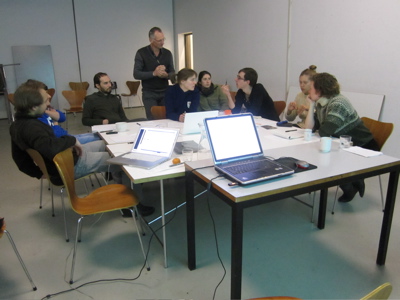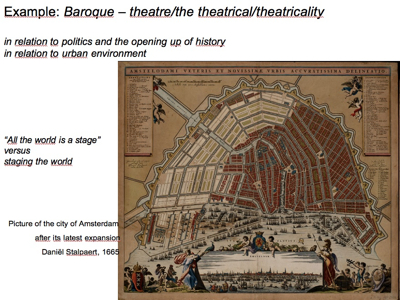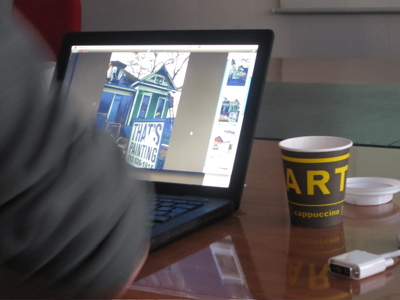This past month we focused on reading and rhetoric as forms of presentation. On Thursday Frans-Willem Korsten introduced some tools with which to read the urban environment. In his lecture ‘Reading the city’, the idea that we can read our environment, which in our case is predominantly an urban environment, is as old as the study of rhetoric. In the last decades the ability to read the environment has been defined generally in terms of coherence or orientation. So far none of the studies concerned considers reading itself to be a political act. Reading is self-evident and has to be facilitated. During the day’s discussion we dealt with reading our environment and considered reading as perhaps the most basic political decision one can take. ‘One has to choose sides first before one starts reading. Or reading should open up the possibility to switch sides.’ In that context we gained clarity about tools such as narrativity, theatricality, lyric, spectaclicity and gamistry and then each participant described a known space, using one of the new tools mentioned above.


Friday we met at De Volkskrant building in Amsterdam and seeing that we will be working on making contributions to this website, I explained how n.e.w.s is organised and the direction of this collaborative online platform. N.e.w.s. contributor Stephen Wright did finally arrive from Paris and after a late start he gave a marathon lecture on the direction of our forthcoming book, along with citing some key art historical paradigms.
‘Art, incidentally, is redundant… but that should not be seen as its doom, but rather as its great fortune. It is redundant in that it has, bit by bit, done away with all material and perceptual externality with respect to other forms of human activity; it has sundered itself from everything – all the generic, geographic and other essentializing moorings that continued to fetter it throughout the twentieth century – except it own histories and self-understanding.’ This user-friendly presentation focused on a cross-section of contemporary, incidentally artistic practices, whose coefficient of artistic visibility is deliberately impaired, situating them with regard to earlier conceptual practices of the 1970s, drawing some conclusions about the prospects of art after spectatorship.’
Afterwards we reviewed participants contributions: videos, audio tracks, images, powerpoints, whatever and briefly discussed our collaborative plan for a one-hour ‘showreel’ for televison broadcast. More on that in the upcoming posts.

